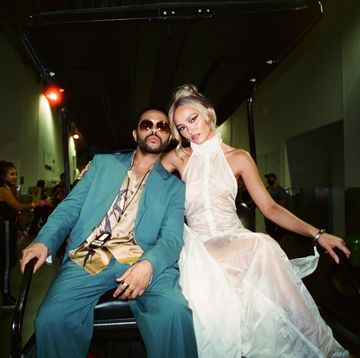Do you taste particularly succulent when pan fried with some caramelised pineapple? Perhaps you turn scarlet when forced to defend Trident to the 'loony left' on Question Time? If the answer to either of these questions is yes, you might just be a gammon.
In a Times piece yesterday called 'Corbynites' insults will only hurt themselves', journalist Lucy Fisher rallied against the online barb du jour - a byword for stale males, ageing Tories and (surely the real victims here) innocent rosacea sufferers - arguing that it "is a term as dripping with contempt as cooked ham drips with grease" which "provides a key insight into the psychology of the Labour leader’s outriders."
Fisher's piece instigated today's episode of Bored Journalists Fall Out On Twitter - the kind of playground melee that stirs up every few days before improbably making it onto a segment on Channel 4 news, where it'll be debated by James Delingpole and Yasmin Albhai-Brown before Jon Snow interjects to put us out of our misery until 8pm tomorrow.
So what's the particular story here? The modern history of the insult can be traced back to when Caitlin Moran termed David Cameron "a camp gammon robot – a C3PO made of ham" in her 2013 book Moranthology. The term was recycled by celebrity chef Ruby Tandoh in 2015 when she described Paul Hollywood as, "a walking gammon joint".
Since then it has become a go-to term of derision among Corbynites, and has oft been shared alongside a line up of Question Time attendees in Pantone shades of rouges.
In February Huck Magazine's Matt Zarb-Cousin articulated it more clearly, describing gammons as ″Older men who, despite having all the opportunities that baby boomers enjoyed, are confused and angry at the modern world. It’s a condition that once manifested itself as an affinity to UKIP, but now more so to high blood pressure and a red meat complexion."
It's an insult that could barely be more childish - even in the age of jibes such as 'Centrist Dad' or 'Soyboy' - and yet it's riled plenty of people up.
This weekend DUP MP Emma Little-Pengelly took the term very seriously indeed, tweeting: "This is a term based on skin colour and age — stereotyping by colour or age is wrong no matter what race, age or community."
The MP, who represents a party rife with bigots and homophobes, had the sense to make her account private shortly after, but the lunacy of comparing someone with florid face a cut of pork with racism had already caused widespread mirth.
With good reason, of course. Comparing a rubicund male to a gammon is no more racist than saying your friend with sunburn looks like a lobster. But even more ironic is that those who have taken offence are the same people who complain Millennial 'snowflakes' are too easily offended.
In addition to calls of racism, the insult that been charged with classism, "People aren't being called pastrami/parma ham/bresaola are they?" tweeted (and deleted) New Statesman deputy editor Helen Lewis.
This is a stretch. Being afflicted with a touch of the gammon is a condition that transcends class. What pumps scarlet blood into the cheeks of gammon is an indiscriminate, impenetrable rage that affects swathes of flushed men, from rich Eurosceptic Tories in Sussex to struggling, Corbyn-loathing UKippers in Sunderland.
Rage at unelected elites in Brussels, rage at the will of the people being subverted, rage at gender neutral bathrooms and halal meat in the Torquay Pizza Express. A rage at How Things Used To Be fading away, and - as happened to the humble gammon - being replaced by new-fangled ideas, like streaky bacon.
The insult could have been drawn on any number of glowing cuts of meats. And yet there's something so antiquated and depressing about the brined hind leg of a pig that fits the job so perfectly. If a cut of meat was going to question climate change or campaign to bring back the death penalty or just be forgotten, forever, it would almost certainly be gammon. That's probably why it's causing such a lot of fuss. Until the next thing.













